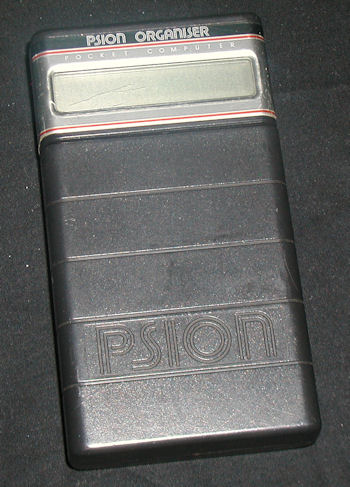IMSAI 8080 Project
SHARE |
|
  IMSAI 8080 Project
IMSAI 8080 Project |
by Bill Degnan - 01/01/2005 16:24 |
|
NOTES:
IMSAI 8080 1-10-05 http://www.vintagecomputer.net/imsai/8080_number1/ These are some quick pictures for my reference, before this computer goes under the knife. I am going to work on one card at a time. The first thing I want to do is get rid of that stupid keyboard rigging. I have a replacement card and cable someplace... Currently (not shown) I can get screen output to a regular Commodore 1801, but it's not much. The disk drive was supposedly working recently, but I have not had much luck loading anything. I have some spare drives hopefully I can piece something together. About the books - These I had lying around, except the IMSAI User Manual which came with the computer. I hear that these are hard to come by. Not pictured are the manuals for all of the cards encased. More specific details to follow. Card names, part numbers, etc. ---------------------------------------------- Reply |
|
  IMSAI 8080 Project
IMSAI 8080 Project |
by Bill Degnan - 08/16/2005 21:17 |
|
Notes from InfoAge visit, the MidAtlantic Retro Computing Hobbyists meeting on 8/13.
Completely cleaned and tested. Replace 2 front panel switch covers. Got to > Prompt, but intermittently. Do not have working keyboard. Reply |
|
  IMSAI 8080 Project - Cuter and Keyboard
IMSAI 8080 Project - Cuter and Keyboard |
by Bill Degnan - 09/16/2006 22:12 |
|
Worked with fellow MidAtlantic Retro Computing Hobbyist member Bill Sudbrink to try to complete restoration of IMSAI 8080. I could offer little technical assistance, and I learned a lot about S-100 systems and Oscilloscopes.
SUMMARY OF ISSUES: -Screen is outputting "C" characters over and over - bus noise causes us to loose prompt. -No keyboard cable to attach IMSAI to George Risk model 756A ASCII keyboard. -Unsure if processor to front panel cable OK. -Cannot boot diskette STEPS TAKEN: Splice processor to front panel cable and repair small chip cut in cable. 1. Remove cards except processor and Cuter. 2. Checked switches and lights. Looking for CPU & Cutter OK when set databus switches to 7F. Cuter OK but Cutter RAM is phantoming out the RAM on the RAM card so that for example when asking for address C000 - The ROM card responds with what's on the Cuter chip, and tells RAM to go PHANTOM. Determined that the reset switch disables the ROM card, (so leave it alone.) 3. Inserted video card. Prompt appears intermittently. System bus not stable. (The connection cable to the monitor is co-ax jack-->RCA-->mono display) 4. Inserted bus terminator card into back bus slot to prevent ring back on the bus. 5. Insert serial parallel card (3P + S) for keyboard. 6. We need a 5v+ -12v so used schematics to locate on card. We made our own 30 pin connector out of a 44 pin connector, using a hack saw. We made the cable to the keyboard and connector. Solder points for wire from user manual. We chose the following wire assignments: red: +5v yellow: -12v brown: bit 1 white: bit 2 grey: bit 3 purple: bit 4 blue: bit 5 green: bit 6 orange: bit 7 2nd blue: strobe black: ground 7. Modify 3P + S card for -12 (J2) to pin 1 (See figure 4-1 in 3P+S manual, J1 & J2 pin connectors) 8. Solder the wires to pins on connector attached to right connector when facing card from front of computer. 1 -0 strobe to pin 3 ground wires (black wires) to 12,11, 10, 9 on card connector. Because there were more than 4 black grounds, we had to bundle the grounds. This was tough. 11. Press a key on the keyboard..getting three keys for every one keystroke. Seems that Cuter and the keyboard are not communicating correctly, or there is a strobe issue. Consistently getting 3 characters for one keystroke. Tried "not strobe"...from pulse...move to 3. Did not work. Caused many characters to appear on screen for one keystroke. You need the strobe. Got out the oscilloscope to see if Cutter is sending "ack" to keyboard that it received the keystroke. The strobe is 1 millisecond, and Cutter can handle 3 keystrokes per millisecond. Determined that yes, Cutter is sending ack. 12. Check the JK flip flop on the 3P+S. Is there a bad chip? IC 15 pin 11 is supposed to connect to IC 20 pin 11. We could not get a confirmed connection with oscilloscope. We next tested oscilloscope pin 11 of IC 20 to see if we can get a signal, nothing again. Is IC 20 bad? We re-seated 15 and 20. On the oscilloscope we had two probes. We saw that when the strobe was coming in, the JK flip flop did nothing. Next Check IC 21 pin 6 From this... We determined that the 74109 chip (IC 15) is bad. I happened to have another one, so we were able to replace and move on. The spare came from my cassette controller card, so I will need another one! 13. We now can try to use the strobe latch circuit to get proper communication with the keyboard. NOET: Used a strobe latch patch, to card pin 3 14. Put keyboard strobe signal back on 3...not good, causes crazy chars to appear on screen. never mind 15. Change strobe on keyboard side from pin 1 to pin 2. Caused crazy characters on screen. never mind again. 16. Theory 3 IC Pin 9 missing back to latch, needs to find a 7404, see page IV 21...but there is no 7404 chip on the 3P+S card. * IC 15 provides both the ack and not the ack, to stop the key input to just one key per keystroke. ..this did not work... 17. We then studied the patched wiring of the 3p+S card. We found a bad solder. Problem solved, keyboard works. Reply |
|
  IMSAI 8080 Project - Testing Cuter
IMSAI 8080 Project - Testing Cuter |
by Bill Degnan - 10/23/2006 22:12 |
|
Attach system to monitor, keyboard. Power on system
1. Hit STOP 2. Make sure first two Addresses program Input Switches are in the up position, all other address/data switches down. (C000--) 3. Hit examine one or twice 4. Hit RUN - should see > Prompt 5. DU C000 CFFF [enter] 6. EX C0001 [enter] - clears screen ----- ----- Try this: EN C880 [enter] to enter memory mode / [enter] to return to Cutter ---- ---- Test the lights (note prompt changes): >EN C880 [enter] :3E FF DB FF D3 FF C3 80 CB / [enter] >EX C880 [enter] If this worked, you will notice that the Address Programmed Input lights on top row will corresp. to switches moved up or down. Reply |
|
  IMSAI 8080 Project - Booting to Disk
IMSAI 8080 Project - Booting to Disk |
by Bill Degnan - 10/23/2006 22:49 |
|
1. Testing Memory cards
At least in my case I needed one of my memory cards to be operating in the lowest possible memory range (the first 4K) for the floppy controller. I put in card that I think is "0000 memory" by checking the dip switches of the memory card(s). Run this command >DU 0000 0FFF [enter] I expect the correct card will report something other than FF FF FF ... on the screen. 2. Insert floppy controller. I have a Micropolis controller. Here is where I have left off. Reply |
|
  Micropolis drive OS bootstrap
Micropolis drive OS bootstrap |
by Bill Degnan - 02/26/2008 22:11 |
|
The Micropolis disk drive controller stores it's bootstrap to someplace within F000-FFFF, reads the OS of the diskette and stores it to 0000 - 7FFFF.
Currently all memory is set for 0000 - 7FFF (16K), plus C000-CFFF used by CUTER (monitor program). THUS I need to add another memory card and assign it to the F000-FFFF space. I probably could use space on the CUTER or CPU card, but it's easier to just add another card and toggle the dip switches to F000-FFFF (or maybe E000-FFFF depending on what K cards I have available. THEN I should be able to boot Micropolis 16-hole hard-sectored disks. [UPDATE - Totally WRONG!] The Micropolis drive card has the ROM that uses this space, you don't need a RAM card set to this. Reply |
|
  Update
Update |
by Bill Degnan - 04/06/2008 22:13 |
|
update - the bootstrap is now loading fine, did not need to add another card, the system has enough memory as is.
c000 - Cuter F400 - Micropolis Bootstrap Used Cuter DU commond to confirm. Reply |
|
Resources:

Popular Topics and FAQs
Past Issues:
PSION Organizer

This image was selected at random from the archive. Click image for more photos and files from this set.